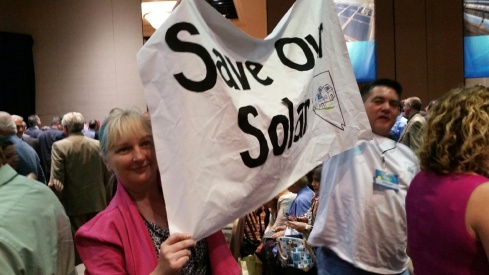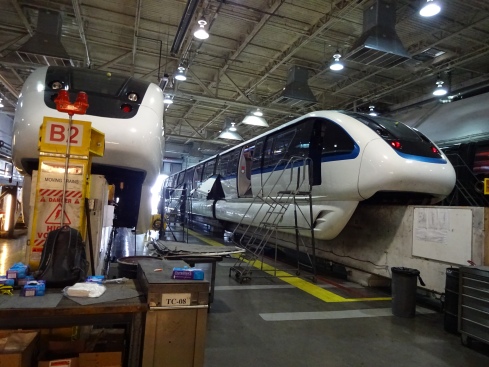Two months after the fire at the Cosmopolitan Hotel’s pool deck, county officials are waiting for lab results that will shape the discussion about possible changes to building codes governing exterior decorations in commercial buildings.
The investigation of the Cosmopolitan fire was completed in August. And while fire and building officials can identify where the fire started, they were not able to identify the cause.
Samples of the various components of the palm trees, including the plastic fronds, expanded polyurethane foam plastic, and the hard polyethylene simulated bark, have been shipped to a laboratory for analysis. Once the test results have been reviewed, the Clark County Department of Building & Fire Prevention will decide whether it is necessary to add an addendum to the Clark County Building Code to include how and if plastic decorative plants and turf can be used in a commercial outside setting. And, it will be up to the cities of Las Vegas, Henderson, and North Las Vegas to follow suit if they feel there is a need to incorporate new language into their building codes.
The July 25 fire at the 14th floor Bamboo Pool brought back memories of the 2008 fire of the exterior facade of the 32-story Monte Carlo Hotel and Casino.
Although the causes of the Monte Carlo and the Cosmopolitan fires are different, the end result was the same — a dramatic life threatening fire.
According to Douglas Evans, fire protection engineer and former Clark County Building Department employee, “In both cases, improperly encapsulated foam plastics appear to be (at least one of) the primary problems.”
Both fires involved highly flammable foam plastic.
The decorative band along the top of the 32nd floor of the Monte Carlo was encapsulated with a hard coat polyethylene that was found to be the primary contributor to the fire. Likewise, the synthetic palm trees at the Cosmopolitan had an exterior polyethylene hard plastic coating (to look like the bark of the tree), covering the steel skeleton and polyurethane foam plastic.
The 32-story Monte Carlo Hotel and Casino was constructed in 1994 and 1995 using the 1991 edition of the Uniform Building Code. The entire exterior of the hotel was clad in a foam plastic Exterior Insulation Finishing System (EIFS). The use of EIFS is a fairly common ‘cladding system’ that has been used for years as an insulating barrier, as well as decorative facade features to create some of the famous Las Vegas Strip fantasy world illusion. One of the more prominent and extensive uses is the Excalibur Hotel and Casino.
The Monte Carlo fire was sparked by a welder that was constructing a catwalk on the roof parapet wall — a 30-foot high screen wall clad with foam plastic EIFS. The welder failed to use the proper asbestos matting and shielding to prevent the sparks and hot metal particles from landing on the unprotected surfaces, in this case, the upper horizontal foam plastic decorative band.
In the follow-up investigation, it was found that the hard polyethylene material that encapsulated expanded polyurethane foam plastic was not to code. The code also called for the entire EIFS to be no more than four inches thick. However, some of the decorative pop-outs consisted of expanded polyurethane foam plastic that were as much as three feet in thickness. It was a combination of the inappropriate coating and extreme thickness of EIFS material that exacerbated the problem in the Monte Carlo fire.
Evans, who is a member of the International Code Council and a fire protection engineer, stresses that when installed according to code, EIFS cladding is extremely safe. “The problem is that during construction, the product is delivered to the site and immediately installed on the building, making it impossible to inspect after the fact.” Evans advocates for the implementation of third party inspections at the EIFS manufacturing facility before it is sent to the site and has given several presentations on the subject.
According to Evans, plastics burn differently than “conventional materials”, such as wood or cotton:
• Flame spread was more rapid, and the likelihood of flashover was increased;
• Plastic products produced more BTUs per pound than conventional materials;
• Greater amounts of dense smoke were produced;
• Toxic or flammable gasses were released more quickly;
• Polystyrenes tended to melt or drip and contribute to spread of fire;
• Certain types of polyurethanes could self-ignite if improperly formulated or applied.
In the case of the Cosmopolitan Hotel, the exterior cladding is steel and glass. However, the fake palm trees used as decorations at the Bamboo Pool area were made of the same expanded polyurethane foam plastic and coated with a plastic encapsulant that was made to look like the bark of the tree.
Because these fake palm trees were being used as exterior decorations, they fell outside the architectural and interior design codes and were not required to be permitted or inspected before installation.
Ron Lynn, director of the county’s Department of Building and Fire Prevention, told reporters that current codes govern physical structures such as pool decks and cabanas, but plants and outdoor furnishings are not covered.
Foam plastic palm trees constructed similarly to the trees used at the Cosmopolitan but passing rigorous fire testing are also being used inside McCarran Airport’s Satellite D terminal.
One interesting fact is that a large portion of the pool deck of the Cosmopolitan is also covered with artificial turf, another decorative item that is not regulated. However, the glass walls surrounding the Bamboo Pool as well as the glass in the building was reflecting and intensifying the sun’s rays and melting the polyethylene grass fibers. Fortunately for the hotel and guests, in January of 2013, the Cosmopolitan had replaced 5,000 square feet of the pool area’s old synthetic turf with a product called SYNRye 211, manufactured by SYNLawn. The SYNRye 211 is made of 100 percent nylon fibers and holds both ASTM E648 and Class A fire ratings. Had the former polyethylene artificial turf product still been in place, it is possible that the entire ground cover could have caught fire.
– See more at: http://businesspress.vegas/learning-curve/cosmo-fire-similar-monte-carlo#sthash.6TIJS9y1.dpuf





